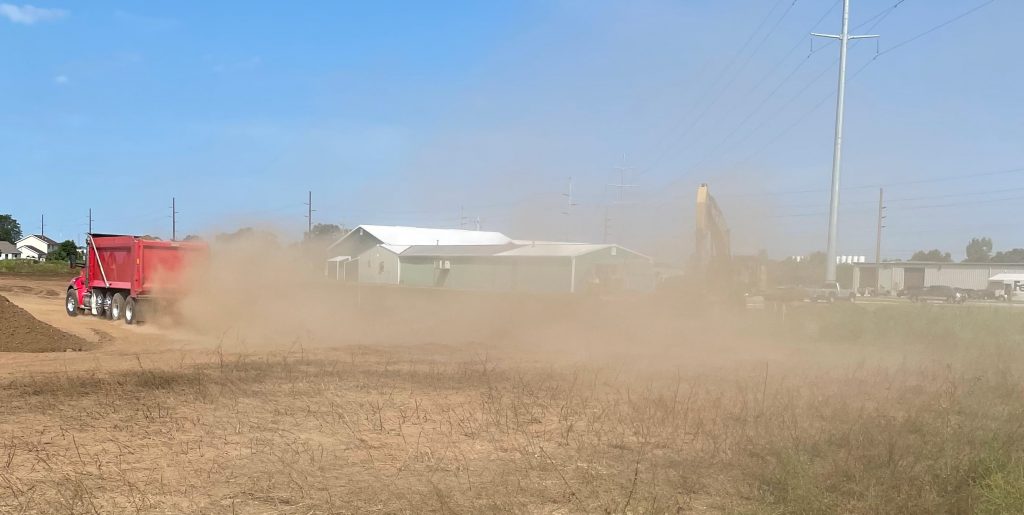Welcome back to another edition of Blogging BMP’s. It’s that time of year again when all of the events of summer start to wind down and our focus goes from fairs, family and fun to farming, factories and football in the blink of an eye. The kids are heading back to school and the adults are struggling to get back into the routine that seemed so easy back in late May. For me, the summer is the busy season so I am looking forward to the cooler weather and the franetic pace that the construction industry has to slow up a bit.
Speaking of weather, I have an interesting statistic I would like to discuss. August is the wettest month of the year in Elkhart county with an average of 4.3 inches of rain in the month, annually. What is crazy is that August also has fewer rainy days, on average, than any other month other than September, annually. How can this be you ask? Well, August is filled with shorter, more intense rain events that come fast and furious. It is not abnormal to get two or three rain events and have more than 5 inches of rain. August is also the second warmest month of the year creating a rapid evaporation rate that often leaves you wondering if it even rained 30 minutes after a gully washer rolls through. Fast rain + fast evaporation + several days between rains = dry surface soils. So what BMP could possible relate to this phenominon? Try not to laugh, but fugitive dust emissions are a real thing, and now is the time that they make there break from the the confinements of a field or construction site whenever heavy equipment passes over them.
According to the Indiana Department of Environmental Management, or IDEM, fugitive dust means “the generation of particulate matter to the extent that some portion of the material escapes beyond the property line or boundaries of the property, right-of-way, or easement on which the source is located.” Fugitive dust includes fine particles that become airborne from a variety of common activities, including but not limited to construction, commercial mining, demolition, and soil erosion from wind. Fugitive dust does not include fine particles that originate from a stack, vent, or chimney.
The state rules on fugitive dust, which apply to all sources of dust (particulate matter), are found in the Indiana Administrative Code at 326 IAC 6. A source is considered to be generating fugitive dust if the dust is visible crossing the property line at or near ground level. For sources to comply with fugitive dust rules, prevention measures may be required. However, under 326 IAC 6-4-6 certain activities are exempt from the fugitive dust rule. Common examples include dust from agricultural, construction, or demolition activities providing every reasonable precaution has been taken to minimize dust; as well as dust from publicly maintained unpaved roads where a nuisance or health hazard is not being created.
So how do you prevent or suppress these fugitive particles?
The simplest solution is to apply water to the dust, but that can create an unwanted slurry that travels on tires.
The most realistic solution is to have heavy equipment slow down when driving on roads or lots that are not paved
When all else fails, use an approved dust suppressant that will hold the particles down and will not travel with tires. A list of these approved suppressants can be found at https://www.in.gov/idem/aircompliance/fugitive-dust/dust-suppressants/ . As with all BMPs, it is not a one size fits all situation so take the time to figure out what is the best solution for your particle issue. For more information on this topic visit https://www.in.gov/idem/aircompliance/
